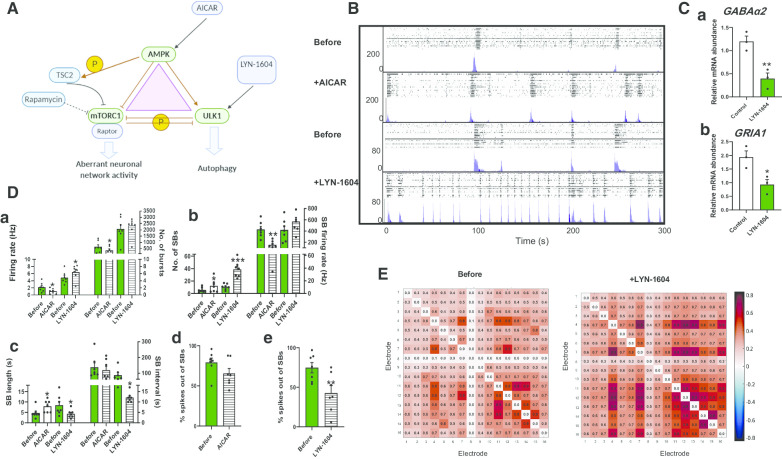Fig. 5.
Effects of AICAR and LYN-1604 on TSC2 neuronal activity. A Schematic to show the relationship of TORC1 to AMPK and ULK1. B Raster (upper panel) and ASDR (lower panel) plots of recordings of the same MEA showing 24-h exposure to AICAR (1 mM) and LYN-1604 (2 μM). C Gene expression analysis of the genes encoding GABAa2 (a) and GRIA1 (b) in control cells following 24-h exposure to LYN-1604 (2 μM). D Network activity following 24-h drug treatment of TSC2 neurons in the absence and presence of AICAR and LYN-1604 in the absence and presence of AICAR and LYN-1604 showing a basal excitability, b synchronised burst (SB) activity and the number of spikes in individual SBs, c SB length and interval and d, e the spikes out of SBs, presented as percentage of the response before the drugs treatment. E Correlation matrices heat map for TSC2 neurons in the absence and presence of LYN-1604, colours represent the correlation in the firing rates across the indicated electrode. Correlation matrices are calculated for 16 electrodes in control and TSC2 neurons plated on the MEAs. Values greater than zero represent positive correlation, while values below zero represent negative correlation. All plots show means ± SEM. *p < 0.05, **p < 0.01 following paired t-tests. Number of recorded wells = 7

